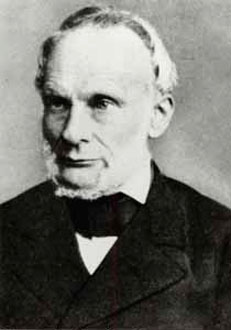Rudolf Clausius: Difference between revisions
Kcrawford38 (talk | contribs) No edit summary |
Kcrawford38 (talk | contribs) No edit summary |
||
| Line 1: | Line 1: | ||
By Kaylyn Crawford | By Kaylyn Crawford | ||
[[File:rudolf-clausius-1.jpg]] | |||
==The Main Idea== | ==The Main Idea== | ||
Rudolf Clausius (1822-1888) was a German physicist and mathematician whose main contributions include the second law of thermodynamics and entropy. Clausius also updated theory in the area of kinetics. | Rudolf Clausius (1822-1888) was a German physicist and mathematician whose main contributions include the second law of thermodynamics and entropy. Clausius also updated theory in the area of kinetics. | ||
| Line 14: | Line 14: | ||
Clausius's most significant work was in the field of thermodynamics. He wrote the paper ''On Moving Force of Heat'' in 1850. In this work he writes, "Heat can never pass from a colder to a warmer body without some other change, connected therewith, occuring at the same time."Clausius's contribution to the field of kinetics included an update to the gas-kinetic model by August Kronig. He revised the model to account for the translational, rotational, and vibrational motion of molecules. On the subject of entropy, Clausius defined the mathematical model for the concept in 1865 and originally symbolized it as Cl for the unit Clausius. This unit was equivalent to 1 calorie per degree celsius. | Clausius's most significant work was in the field of thermodynamics. He wrote the paper ''On Moving Force of Heat'' in 1850. In this work he writes, "Heat can never pass from a colder to a warmer body without some other change, connected therewith, occuring at the same time."Clausius's contribution to the field of kinetics included an update to the gas-kinetic model by August Kronig. He revised the model to account for the translational, rotational, and vibrational motion of molecules. On the subject of entropy, Clausius defined the mathematical model for the concept in 1865 and originally symbolized it as Cl for the unit Clausius. This unit was equivalent to 1 calorie per degree celsius. | ||
Latest revision as of 16:17, 5 December 2015
By Kaylyn Crawford
The Main Idea
Rudolf Clausius (1822-1888) was a German physicist and mathematician whose main contributions include the second law of thermodynamics and entropy. Clausius also updated theory in the area of kinetics. State, in your own words, the main idea for this topic
Education
Clausius studied mathematics and physics at the University of Berlin in 1840 and later went on to earn a PhD from the University of Halle in 1847.
Work
Clausius's most significant work was in the field of thermodynamics. He wrote the paper On Moving Force of Heat in 1850. In this work he writes, "Heat can never pass from a colder to a warmer body without some other change, connected therewith, occuring at the same time."Clausius's contribution to the field of kinetics included an update to the gas-kinetic model by August Kronig. He revised the model to account for the translational, rotational, and vibrational motion of molecules. On the subject of entropy, Clausius defined the mathematical model for the concept in 1865 and originally symbolized it as Cl for the unit Clausius. This unit was equivalent to 1 calorie per degree celsius.
References
http://www-history.mcs.st-and.ac.uk/Biographies/Clausius.html
